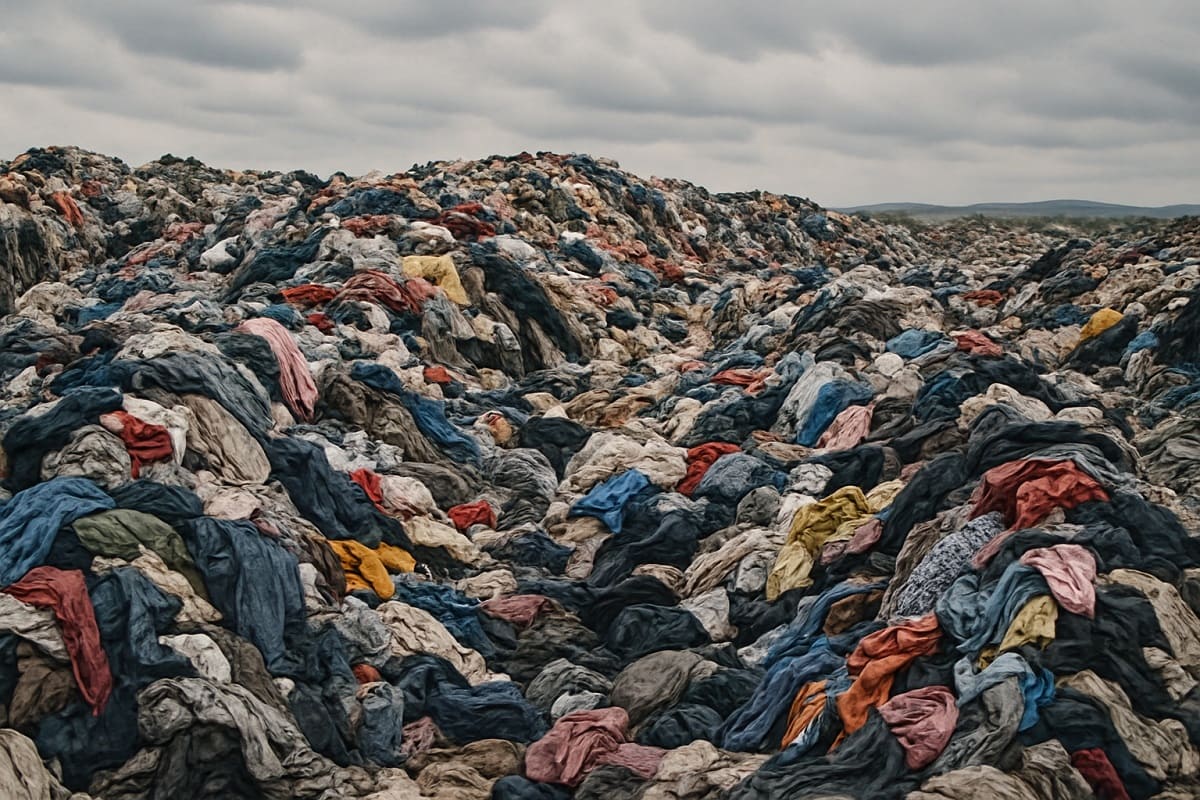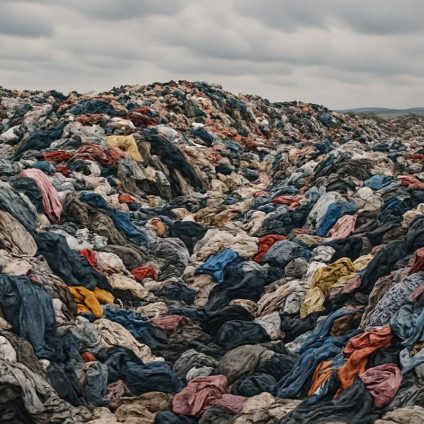Every year, millions of used clothes from Europe end up in Africa. Many are unsellable and become pollution. Greenpeace sounds the alarm.

Africa becomes the dumping ground for textile waste
The world produces roughly 83 million tons of textile waste each year, much of which is increasingly difficult to dispose of. About 65% of this waste is made of synthetic fibers derived from fossil fuels. The harsh reality is that every second, the equivalent of a garbage truck filled with clothes is burned, dumped into the environment, or sent to landfills.
And what wealthy nations wear out, or grow tired of, often ends up in massive textile piles in Africa. Europe plays a major role in this system, exporting large volumes of unwanted clothing, often from fast fashion brands.
EU exports 46% of its used textiles to Africa
According to Greenpeace Africa’s latest report, Draped in Injustice, in 2019 alone the European Union exported 46% of its used clothing to African countries. That figure only includes Europe, but in reality, Africa is the global landfill for textile waste. Roughly half of the EU exports were deemed unfit for resale.
The result is worsening pollution in countries like Angola, Kenya, the Democratic Republic of Congo, Tunisia, Ghana, and Benin, those hit hardest by the influx of textile waste.
The numbers behind textile waste imports
In 2022, African nations imported nearly 900,000 tons of secondhand clothing. Kenya alone received 900 million garments in 2021, mostly from Europe and the UK. Yet 50% of those clothes were poor quality or damaged, ending up in open-air fires, illegal dumps like Dandora, or polluting waterways like the Nairobi River.
Uganda imported 100,000 tons of used clothing in 2023, primarily from China, the United States, and Canada. Up to 48 tons of these clothes become textile waste every single day. In Ghana, markets receive about 15 million garments every week, nearly half of which are unsellable and leak into the environment.
Often, dumpsites overlap with delicate ecosystems. Local communities report that fishing nets, rivers, and beaches are clogged with synthetic fast fashion garments exported from the UK and other parts of Europe. The brands identified in the waste are widely recognized and trace back to the fast fashion industry.
Greenpeace targets fast fashion
“The report from Greenpeace Africa describes an alarming scenario, showing the environmental and health consequences of a trade that’s spiraling out of control: the secondhand clothing trade in highly vulnerable regions,” said Chiara Campione of Greenpeace Italy. “It’s essential to address the root cause by changing unsustainable production systems like fast fashion and ultra fast fashion.”
Emissions, microplastics, and hazardous chemicals
The fashion industry is responsible for an estimated 8–10% of global greenhouse gas emissions due to the high energy demand across global supply chains. This issue is worsened by the fast fashion business model, which churns out disposable clothing designed to become waste in just a few weeks.
Synthetic fabrics also contribute significantly to microplastic pollution. These particles end up in the environment, reduce the oceans’ ability to absorb carbon, and accelerate climate change.
The fashion supply chain is a major user of chemicals as well. Of the 3,000 chemicals used in textile washing and dyeing processes, at least 250 are known to be hazardous.
In March 2022, the European Strategy for Sustainable and Circular Textiles was approved. It includes extending producer responsibility (EPR) across the entire lifecycle of textile products and introduces stricter rules on textile exports to non-OECD countries. The regulations are currently under development.













